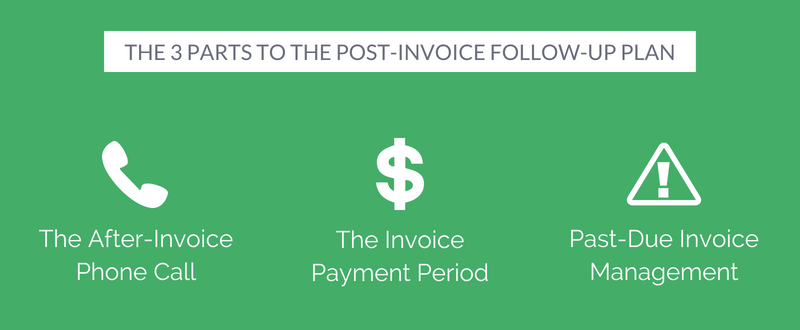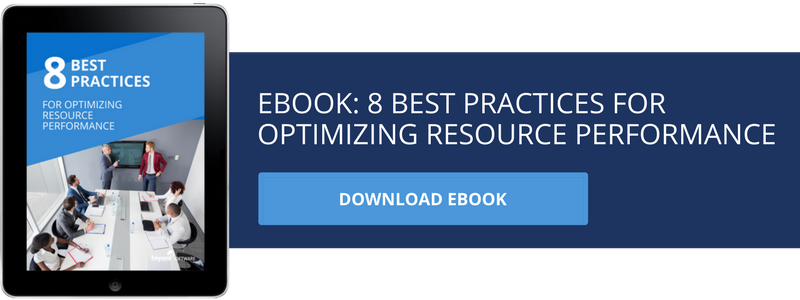*This is the final article in a series of articles related to project billing and project-based accounting.
Read the 1st article: Developing an Effective Project Billing Process
Read the 2nd article: Should You Use Milestone Billing or Project-Based Billing?
Read the 3rd article: Project Billing Policies - Tips & Best Practices
Read the 4th article: How to Improve Your Project Invoicing Process
You’ve completed the project, met the deadline, and delivered a shining example of professional service to your client. You’ve also sent the project invoice. Now, all that’s left is to wait for the payment to roll in. Right?
Maybe in a perfect world. But as much as clients appreciate what professional services organizations (PSOs) provide, nobody enjoys paying bills. Yet, like every other business, the well-being of your PSO depends on clients paying what they owe – on time and in full. What do you do, then, when the payment deadline passes and you still haven’t seen the first dollar of what’s due? All you can think about are your own financial commitments as you wonder what to do next.
Thankfully, the period of time between sending an invoice and receiving payment doesn’t have to be this stressful or confusing – even on those occasions when client payments are past due. There are actions you can take to ensure clients with outstanding invoices pay by, or even before, the due date – and to encourage clients who are late to “get busy” and take care of their obligations. These actions are your Post-Invoice Follow-Up Plan.
As with anything worthwhile, a good Post-Invoice Follow-Up Plan requires planning. But a little preparation now will transform the invoice credit period from a time of reactive waiting to one of proactive doing. The result for your PSO? Fewer late or unpaid invoices, less frustration, and a more liquid cash flow.

The After-Invoice Call
There are three parts to the Post-Invoice Follow-Up Plan. The first is the after-invoice telephone call. A few days after sending the project invoice (either by mail or digitally), call the client – primarily, as project management consultant David Brown says, “to verify [invoice] receipt and to check that everything is in order.” If the client has questions about the invoice, or hasn’t yet received it, now’s the time to resolve these sticking points so the invoice can be paid on schedule.
Even after projects are finished most still have loose ends to tie up. David Brown refers to these as a project’s “close-out process.” Are there any project compliance documents remaining to be filed? Administrative tasks to perform? Deliverables to ship? The after-invoice call is a good time to make sure everyone is clear on these so that something left undone won’t hold up invoice payment. On the flip side, the after-invoice call is also a good time to remind clients of any items (for example, a project report) that will not be released to them until final payment is received.
If your organization offers discounts for early payment, instead of simply stating this on invoices, consider presenting this offer during the after-invoice call: “I know your payment isn’t due until the end of the month, but if you can pay by next Friday, I can offer you a 2% discount on your invoice total.”
No matter which path the discussion takes, make sure you follow up the after-invoice call with an email to the client, summarizing your conversation. That way, both of you have a written record of what was said. The article “Collect on unpaid invoices and keep the client” recommends follow-up emails for all billing-related conversations.
The Invoice-Payment Period
The second phase of the Post-Invoice Follow-Up Plan consists of all billing-related activities occurring between the after-invoice call and the payment due date. Perhaps the most important of these activities is monitoring your accounts receivable. Don’t just know generally which clients have outstanding invoices. Know specifically who owes you money, how much they owe, and when it’s due.
Why is this critical? Well, for one thing it reinforces how vital prompt invoice payments are to your organization. Even though it’s no one’s favorite pursuit, tracking A/R should never be allowed to become a low priority. David Brown puts it this way: “Cash flow is serious business.” At any given time, you should be as well-versed in the status of your accounts receivables as you are on the projects you manage.
Client touch points during the invoice-payment period are also critical because they help clients remember your invoice is sitting in their payables. One subtle touch point technique is to contact clients to discuss recent projects and future opportunities. Borrowed from the sales world, this strategy allows you to re-emphasize the value you’ve provided to clients in the past and to share your insights on how you can help resolve their upcoming needs. This can boost your cash flow and your project list.
Another not-so-subtle technique is simply to call clients and ask when they will pay their invoice. For example, if payment terms are 30 days, David Brown advocates following up 20 days into the credit period “to get a ‘check-cut’ date.” And if you haven’t done so already, you can offer clients a discount for early payment. A host of touch point possibilities exist for every type of business, so get creative.
Past-Due Invoice Management
Hopefully, your Post-Invoice Follow-Up Plan never reaches this stage. But if it does, don’t hesitate to contact the late client. Business coach Alison Bradford states most people would rather make those dreaded sales calls than to follow up on outstanding invoices. Why? Largely from fear: fear of annoying clients, fear of looking money hungry, etc. Don’t let this happen. Remember, all you’re asking the client to do is hold up their end of the transaction.
Knowing when and how to contact the client is key, however. When an invoice is three-plus days late, Alison Bradford suggests contacting the client via email with a copy of the invoice attached. Once the invoice is past due 10-plus days, it’s time to call. Bradford further suggests having a third party, such as a virtual assistant, make this call, in order to keep emotions to a minimum. And in “Collect on unpaid invoices and keep the client,” Lisa Gill emphasizes that during the call, it’s important to assume the best and give the client “a chance to save face and make things right” so your relationship can continue.
If these actions don’t get the payment process moving, other techniques to try include:
- (a) sending a statement with finance charges,
- (b) re-negotiating the invoice payment terms
- and (c) involving the client team member who requested the project.
If there is still no response, Alison Bradford says it’s time to “know your limits” and escalate the process: turn the invoice over to a collection company, report the issue to credit agencies, and of course, contact the BBB.
Be an Invoicing Pro
No matter what stage of the Post-Invoice Follow-Up Plan you’re in, always remain professional in your attitude and actions. For clients who faithfully pay their invoices on time, this will leave a positive impression that translates into repeat business. And for clients with whom you have to “get tough,” at least you’ll have the satisfaction of knowing you treated them as you would have wanted them to treat you if the roles were reversed. That’s being a professional.
For additional information on Beyond Software please contact:
Nicole Holliday
nholliday@beyondsoftware.com
866-510-7839



